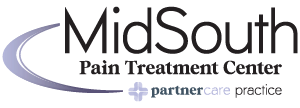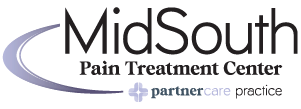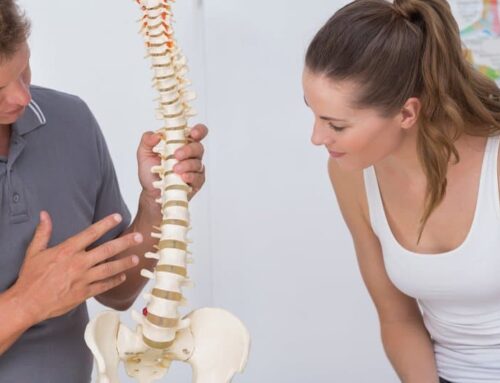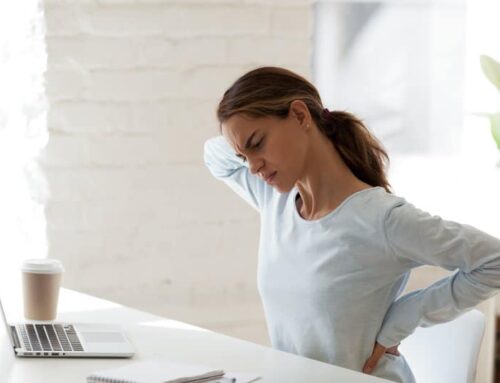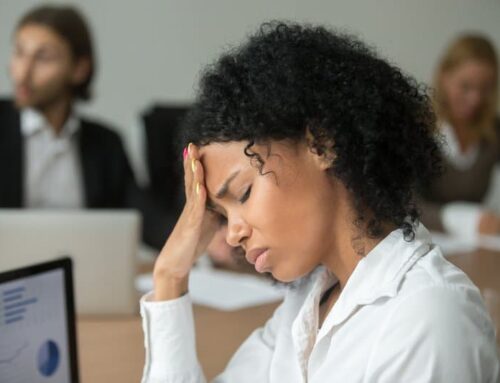A bulging, herniated, or slipped disc is a common medical problem, especially for those over the age of 35. While you might feel some pain from a bulging disc, many people have them and don’t know it. Others will have back pain but not know what’s causing it.
The good news is many people with chronic back or neck pain from a bulging disc respond well to home treatments for temporary relief. At MidSouth Pain Treatment Center, our providers will help you identify the root of your pain and offer a pain management solution specific to you. Left untreated, however, a bulging disc could lead to serious pain and problems down the road.
But first, let’s learn more about bulging discs and the pain they cause.
What is a Bulging Disc?
Discs are small pads with an outer band of thick tissue and a jelly-like filling. It’s that filling that makes these discs flexible when you walk, sit and lie down. The discs sit between each vertebra in the spinal column to provide cushioning and to prevent the bony structures from rubbing against one another when you move.

As people age, the outer band gets more rigid, and the discs lose some of their flexibility. When that happens, a disc can rupture allowing some of the filling to bulge outward. That bulging is a herniation. While a bulging disc and herniations are typically part of aging, damage can occur from an injury such as a fall or from failing to lift correctly.
Pain From a Bulging Disc
About 90 percent of herniated discs occur in the lumbar region of the spine or the lower back. Those who do experience pain feel it because the bulging part of the disc is pressing against the longest nerve in the body — the sciatic nerve. Ninety percent of sciatica, pain along the sciatic nerve, cases occur due to a herniated disc.
Since the sciatic nerve runs over the buttocks on both sides and down the legs, the pain tends to radiate, usually on just one side. For example, you might feel a stabbing pain in one buttock and then down the leg on that side. There may also be tingling in the legs or feet along with muscle weakness.
Bulging discs can pop up in the cervical region of the spine (the neck) as well. In those cases, pain radiates down one arm. The hand on that side might tingle or feel numb, too. The pain from a herniated disc can be chronic; in other words, it might come and go. You might feel it after sitting too long or trying to lift a box. You might wake up with pain in the middle of the night for no apparent reason.
How to Treat a Bulging Disc
Unless you have complications from the bulging disc, its worth trying some home treatments first. Complications can include:
- Pain that interferes with daily activities or work
- Lack of bladder or bowel control
- Loss of sensation in areas that would touch a saddle if you were riding a horse like the back of the legs, buttocks or around the groin area.
Home treatment can be useful for those with mild to moderate pain or at least until you can see a pain management specialist.
1. Ice and Heat
One or both of these home remedies can be a lifesaver when you are in pain. Start with ice to relieve inflammation. Apply an ice pack to your lower back for the first couple of days after the pain starts. On day three or four, switch to heat. Use a heating pad or an over-the-counter heat patch to help relax the muscles.
2. Move on a Schedule
Your first instinct with a bulging disc that’s causing you back pain might be to rest, but that will likely increase the discomfort. Too much bed rest weakens the muscles that support the spine, increasing the pressure of the affected nerve. Instead, spend around 30 minutes in a comfortable position and then get up and walk around and do gentle stretches to warm things up.
Use some common sense when it comes to activity, though. Keep walks 30 minutes or less and avoid bending over or lifting. Overexerting yourself will increase the pain, lengthening your healing time.
Avoid strenuous exercise if you are having muscle spasms in your back, too. Listen to your body. Pain is a signal that you are doing something you shouldn’t, so stop the exercise if you feel discomfort beyond what’s normal for you.
3. Take a Pain Reliever
Don’t automatically reach for the acetaminophen — that’s like putting a bandaid on your pain. If it provides any relief at all, it will be short. Instead, look for ibuprofen or naproxen to help reduce inflammation from the bulging disc. Follow the dosage instructions on the label carefully and don’t take more than recommended.
You may have to experiment to find the right drug that does help you. If naproxen doesn’t offer relief, then try the ibuprofen.
4. Practice Yoga
Once your back is feeling better, consider taking up yoga. A study published in The Clinical Journal of Pain assessed randomized trials involving almost 1,000 people with chronic back pain. The study authors found that yoga provided long-term relief in some cases.
Yoga is also a practice that is unlikely to cause further injury when done correctly. It works much like physical therapy would by improving mobility and flexibility and by strengthening supporting muscles.
Next Steps: Finding a Pain Management Doctor Near Me

If you’ve tried these home remedies to relieve your neck or back pain with little to no relief, you should consider talking with a pain management specialist. The experts at MidSouth Pain Treatment center offer a high level of care to help patients find the cause of their pain rather than mask it with ineffective treatments.
Finding relief for your bulging disc pain is easy with pain management clinics located in:
- Memphis, TN (Cordova and Germantown)
- Southaven, MS
- Oxford, MS
- Tupelo, MS
- Jackson, TN
Give us a call at (866) 707-1942 to schedule a time to see one of our providers, and start your journey towards treating your pain today!
